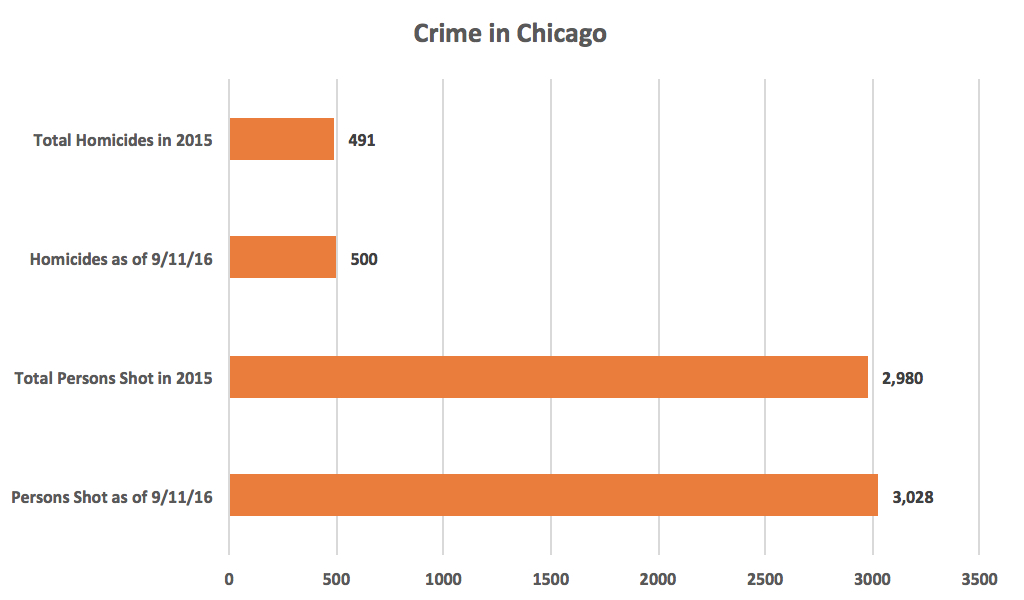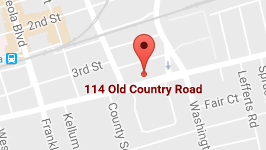According to research published on September 9 by the New York Times, murder rates rose substantially in 25 of the largest cities in the United States in 2015. That research confirms the findings recently published by the National Institute of Justice – a white paper authored by University of Missouri-St. Louis criminology professor Dr. Richard Rosenfeld, who concluded, “The homicide increase in the nation’s large cities was real and nearly unprecedented,” in 2015.
The statistics published by the New York Times tell us that Chicago led the nation’s cities with 488 homicides in 2015. In New York City, with three times Chicago’s population, there were 352 homicides in 2015. Anyone charged with a homicide or a gun crime in or near New York City or Long Island will need to speak promptly with a Long Island criminal defense attorney. St. Louis had highest homicide rate of any city in the U.S. – 59 homicides per 100,000 residents – and Baltimore had the largest increase in homicides, with 133 more in 2015 than in 2014.
In the 100 largest U.S. cities in 2015, nearly 6,700 homicides were reported, about 950 more than the previous year, but about half of those additional homicides were in just seven cities – all of them cities with a poverty rate higher than the national average: Cleveland, Milwaukee, Baltimore, Chicago, Houston, Nashville, and Washington. Three of those cities – Baltimore, Chicago, and Cleveland – were also the sites of protests after the controversial police-involved deaths of black males in those cities.
WHAT’S BEHIND RISING HOMICIDE RATES?
In the National Institute of Justice white paper, titled “Documenting and Explaining the 2015 Homicide Rise: Research Directions,” Dr. Rosenfeld says that although a rising murder rate might be linked to less aggressive policing as a response to protests against police departments, this hypothesis – the so-called Ferguson effect – is overly simplistic, and it needs much more study and critical evaluation.
In fact, researchers cannot agree about what is causing the increase in homicides, and with unique circumstances in each of the 25 major cities, the fact is that there are likely a number of causes contributing to the rising homicide rate. “Cities are obviously heterogeneous,” according to Dr. Robert Sampson, a Harvard professor and crime expert. “There is tremendous variation across the largest cities in basic features such as demographic composition, the concentration of poverty, and segregation that relate to city-level differences in rates of violence.”
WHY ARE HOMICIDES UP IN CHICAGO?
The homicides in Chicago, for example, were concentrated in predominantly segregated neighborhoods. One-fifth of the Chicago homicides took place in just two police districts that are among the city’s poorest. Dr. Sampson told the New York Times, “Flare-ups and spikes in violence are occurring in predictable places. The cynicism and mistrust of legal institutions in poor black communities is longstanding, although recent conflicts with the police have exacerbated underlying tensions.”
While murder rates have plummeted in New York City and in Los Angeles, a rising level of violence is “normal” today in a number of Chicago neighborhoods. Through the end of August 31, Chicago’s murder rate this year alone is up 45 percent. August was the deadliest month in Chicago in nearly 20 years, with 90 murders – more than New York City and Los Angeles combined.
As of September 11, a total of 3,028 persons have been shot in the city of Chicago in 2016, surpassing last year’s total of 2,980 with almost four months remaining in the year. Chicago has also surpassed 500 homicides this year after totaling 491 for all of 2015. In some Chicago communities, only about 20 percent of the murder cases result in a suspect being identified or arrested. The police are not trusted, many residents are uncooperative, and dangerous criminals stay on the streets.
Dr. Craig Futterman, a University of Chicago law professor, told the New York Times that Chicago’s crime problems have been exacerbated by the 2013 closings of dozens of Chicago’s public schools, the substantial changes in the public housing system, and the successful prosecution of several gang leaders, which brought disorder to the gangs’ chains of command, markets, and territories. Dr. Futterman heads up a civil rights and police accountability project at the University of Chicago Law School.
WHY ARE HOMICIDES UP IN BALTIMORE?
The murder rate in 2015 increased more in Baltimore than in any other large U.S. city. Baltimore in 2015 also set a historic high of 55 homicides per 100,000 residents. Some experts say the sudden rise in violence is tied to the large quantity of pharmaceutical drugs looted from pharmacies in Baltimore’s 2015 riots. The death of a young black man, Freddie Gray, while in police custody, sparked the city’s worst riots in 47 years. The Drug Enforcement Administration reported that nearly 315,000 doses of drugs were stolen from 27 pharmacies and two methadone clinics.
Police officials in Baltimore believe that an oversupply of pharmaceutical drugs on the street sparked a war for customers among the city’s street gangs. University of Baltimore criminologist Dr. Jeffrey Ian Ross said, “This would have caused a disruption in drug markets, with more people trying to maintain or increase their market share. You have new entrants coming into the field, altering the supply and demand of illegal drugs in those neighborhoods.”
If Dr. Ross is right, the homicide rate in Baltimore should drop in 2016. In fact, a survey conducted by the Major Cities Chiefs Police Association showed that the homicide rate in Baltimore was slowly declining by mid-2016. Dr. Ross added, “I’m not going to say they’re going to return to historic lows, but we hit a peak last year and things are settling themselves out.”
While homicides in and around New York City seem to be declining – at the moment – if you are charged with a homicide anywhere in the state of New York, do not answer any questions before speaking with an experienced Long Island criminal defense attorney or a New York civil rights attorney. Never try to act as your own lawyer, especially if the charge is homicide, because nothing is more serious. Most observers believe that homicide rates in the nation’s largest cities will return to “normal” levels by the end of 2016. Let’s hope they’re right.















Comments are closed.